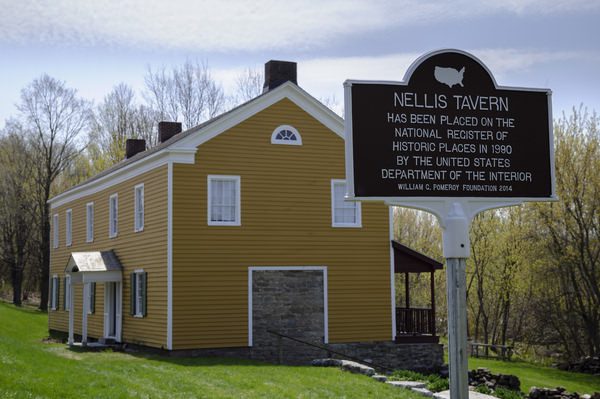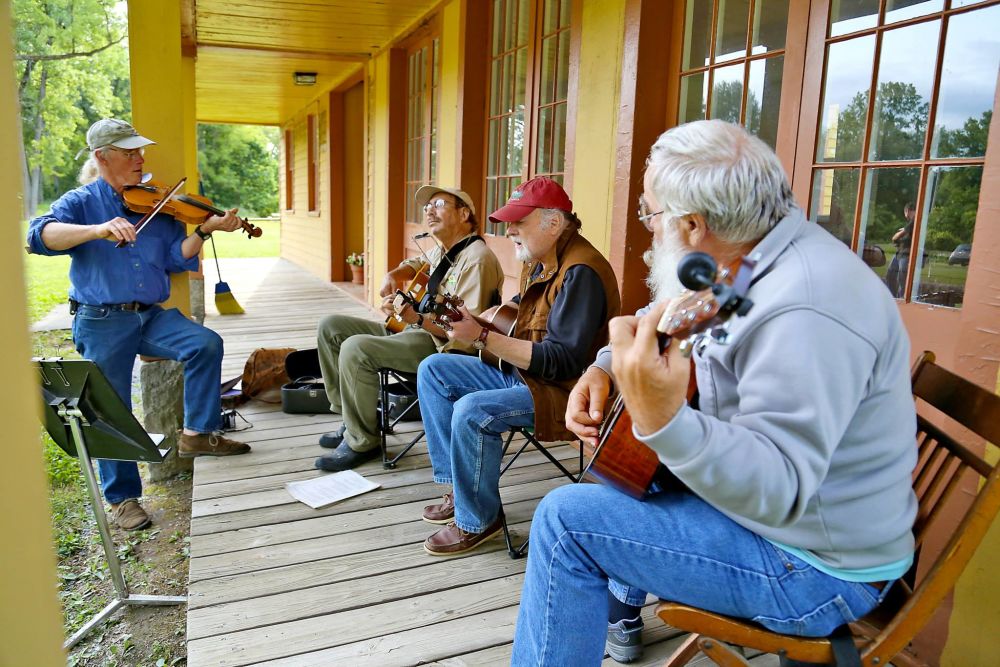A Walking Tour of Canajoharie
African American Life and the Abolitionist Movement in Canajoharie
Henry & Mary Miller (Cliff St.): Both born into slavery, Henry and Mary (Garlock) Miller were emancipated with the 1827 law. They lived on this site where they raised a large family.
Peter & Eliza (Miller) Skinner (Cliff St.): Peter and Eliza Skinner represent the successful integration of many African Americans, born of enslaved parents, into the community life of these Mohawk Valley villages. Both Peter and Eliza became property owners and successful business people in Canajoharie.
African Methodist Episcopal (A.M.E.) Zion Church (Cliff St.): Five African American men, representing African Americans who had been meeting for some time in a local church assembled to incorporate the African Methodist Episcopal Zion Church at Canajoharie. They purchased a plot of land on Cliff Street, just east of the home of Peter and Eliza Skinner. Whether or not they actually built a church there is not known. This church incorporated in 1857. The denomination was synonymous with notable abolitionists such as Harriet Tubman, Frederick Douglass, and Rev. Jermaine Loguen. Rev. Richard Eastup, a freedom seeker himself, was appointed to oversee the Canajoharie mission church i 1862.
Charles Walter & Frances (Skinner) Denning (Cliff St.): Built sometime after 1868, this house was the home of Walter and Frances Denning, African Americans, by 1905. Walter Denning was a Civil War veteran who became a prominent mason and brick worker in Canajoharie, who most likely used limestone quarried near this house. Denning’s father actively shepherded freedom seekers from his home near Elmira. Frances Skinner Denning grew up with her parents in a house just east on Cliff Street.
Philip Phillips (corner of Wheeler & Otsego Streets): As the generation of African Americans who were once enslaved, Philip and Eunice Phillips represent the modest success that steady work and home ownership provided to people who spanned the experience of both slavery and freedom in the Mohawk Valley in the mid-nineteenth century.
Canajoharie Academy (Otsego St.): As headmistress of the female department, Susan B. Anthony taught from 1846-1849 in the building that stood on this spot. One cousin called her “the smartest woman in Canajoharie.” Here she began her public career as a reformer, when she gave her first lecture for temperance on March 2, 1849. She resigned in 1849 to move to Rochester, where she lived with her parents and began her career in abolitionism and women’s rights. The current structure was designed by Archimedes Russell and built in 1892.
Ehle Block (Rock & Cliff Streets): erected 1876 by Eliza Ehle replacing an earlier home that had burned; housed various businesses including Peter Skinner’s barbershop and his wife Eliza Skinner’s ice cream parlor.
Reformed Church (Front St.): Like many churches in Montgomery County, European Americans dominated this congregation, but many African Americans were also members. Philip Phillips and his wife Eunice Van Horn Phillips were both members of this church; Philip Phillips was also sexton.
United Methodist Church: organized in 1828 in Palatine Bridge; built on this site in 1841; new structure erected after 1915 fire; had antislavery lectures including former slave Henry Walton Bibb. Many black families had their children baptized here.
John C. Smith: As a teacher and later President of the Canajoharie National Bank, Smith was one of those Canajoharie residents who, in 1850, signed and sent a petition to Congress denouncing slavery and forbade further admittance of any slave state to the Union.
Shaper Block (northwest corner of Church & Mohawk Streets): first building burned 1891; housed the barbershop of James Teboet. The second building on this site, constructed of brick, burned and was razed in 1973.
George & Eleanor (Read) Caldwell (Mohawk St.): Susan B. Anthony first stayed at the home of her cousin Eleanor (Read) and George Caldwell during her tenure at the Canajoharie Academy. As a conservative Democrat, George Caldwell introduced Anthony to local and state wide political debates, helping Anthony to define her own commitment to abolitionism.
James & Sarah Teboet/John & Mary Cromwell (Mohawk St.): James Teboet learned the skill to be a barber and practiced his trade in the Sharper building just down the street to the east of his home. John Cromwell, residing in the same house, learned to play the violin while a slave in Schoharie County. Hi s orchestra was well known throughout the Mohawk Valley playing at many halls and events.
Chester “Bromley” & Lizzie (Phillips) Hoke (Mohawk St.): Bromley Hoke and Elizabeth Phillips Hoke represent the integral part of that African Americans, descendants of grandparents who had been locally enslaved, played in the economic and social development of the Mohawk Valley, as well as the close ties of family and neighborhood that sustained African American families as they moved from slavery into freedom.
George Gilbert (Mohawk St.): Gilbert worked as a teamster and served as trustee for the A.M.E. Zion Church during its incorporation and its dissolution. Also a member of the St. Mark’s Lutheran Church, Gilbert was a prominent member of Canajoharie’s black residents.
For a copy of the Canajoharie tour map and more information on the Underground Railroad, Abolitionism and African American Life in Montgomery County project, please contact the Montgomery County Department of History & Archives (opens in a new tab) at (518) 853-8186.
 Tavern, NYS Rt. 5 (east), St. Johnsville, NY from 11:00 AM – 4:00 PM. The rhubarb pie baking contest with guest judges starts at 12:00 PM sharp. Lunch items along with all kinds of rhubarb delicacies will be available. Musical entertainment will be provided by Revisions, a barbershop quartet from 1:00 to 3:00 PM. Admission is free but donations are always welcome. Proceeds go toward the continuing restoration and preservation of the 1747 Nellis Tavern, including our wall stenciling restoration. Tours will be available.
Tavern, NYS Rt. 5 (east), St. Johnsville, NY from 11:00 AM – 4:00 PM. The rhubarb pie baking contest with guest judges starts at 12:00 PM sharp. Lunch items along with all kinds of rhubarb delicacies will be available. Musical entertainment will be provided by Revisions, a barbershop quartet from 1:00 to 3:00 PM. Admission is free but donations are always welcome. Proceeds go toward the continuing restoration and preservation of the 1747 Nellis Tavern, including our wall stenciling restoration. Tours will be available.